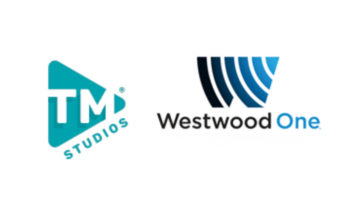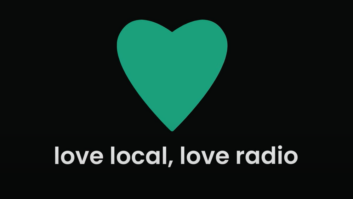
If a program director from the 1970s or ’80s were dropped into a radio station in 2019, he or she would not recognize the sound of today’s jingles, nor even the process of buying them.
Long gone from most jingle studios are large vocal groups, analog mixers and razor blades, not to mention the necessity of sending reels of tape through the mail.
“There is a definite change from the big ‘wall of sound’ vocal groups,” said Los Angeles-based Dave Bethell, creative director as well as a jingle writer/producer for TM Studios in Dallas. “We use smaller groups, younger groups and often just solos or duets.”
Another big change in jingle production is where the vocal and instrumental talent are found. In years past, a studio relied mostly on talent who lived nearby. In Texas, the longtime center of the U.S. jingle universe, this meant Dallas or nearby Denton.
Today, Bethell said, the internet lets him find talent wherever they are and record them remotely. “I use people from Germany; in fact, anywhere around the globe. These are the guys that play on hit records by artists like Bruno Mars, Toto and the Eagles.
[The Evolving Face of Radio Production]
“I’m a British guy,” he added. “I started as a jingle fan and later worked in radio as a voice talent and programmer. I’ve been on both sides of it.”
In his L.A. studio, Bethell uses a Solid State Logic mixer running Pro Tools, many outboard synthesizers and keyboards. He then brings in musicians to play brass, strings or whatever else the project calls for. He can work with remote talent within his Pro Tools session; the talent has a copy of Pro Tools running too. Skype is used for communication between sites.
A custom package can be sent from Los Angeles back to TM in Dallas for final mix and distribution in various ways, including Telos Zephyr or Pro Tools. If it’s a simple re-sing of an existing package, Bethell may just sent the audio files of the vocals to TM, where they are slipped into the mix. TM handles distribution to clients via FTP server.
SHORT AND QUICK
For years before becoming a jingle writer/producer, Texas native Johnny Hooper was a first-call guitarist and vocalist who freelanced for a dozen production companies in Dallas. He has also traveled to the United Kingdom for sessions at Abbey Road Studios in London.

“Today, you can have a decent quality studio in your bedroom,” said Hooper. “You don’t need a big room or a lot of mics. Everything is in a box, and one guy can do everything.
“And the role of the engineer has changed, too. In the past he was just someone who ran the board. Now, the engineers are more important because they manipulate all the sounds. They use pitch correction and manipulate the vocals so much more than in the past. Engineers are crucial to the sound of today’s jingles.”
But those are not the only differences between the jingles of 30 years ago and those of 2019.
“We used to have a lot of long jingles, like city songs,” Hooper said. “The cuts now have to be short. You sing the call letters and the slogan and get out of there quick!”
FORMAT CAPTAINS

Jon Wolfert should know something about jingles. He and his wife Mary Lyn have been running JAM Creative Productions in Dallas since 1974, the longest run of any jingle company in Dallas under one corporate name and set of owners. Wolfert is a lyric writer, arranger, mixer and sales rep.
“In the years before consolidation began, there were thousands of owners and program directors making individual decisions about what jingles to use on their stations,” he said. “Even if someone at corporate decided to use the same jingles on all of their stations, they were only talking about seven stations, or a dozen, or 20, depending on the year.
“But now there are owners who in some cases own dozens or even hundreds of stations. It’s not uncommon for a ‘format captain’ to decide on a package (a group of five or more similarly themed jingles) and force all the stations he’s responsible for to use it, whether they like it or not.”
The cost of jingles and even the manner in which they are financed have changed with market conditions. Wolfert said inflation has been devastating to jingle firms because production costs have risen while budgets have gone the opposite direction.
“Based on the average price of a syndicated radio ID jingle in 1974 and adjusting for inflation, that same jingle today should cost nearly $900,” he said. “But most stations would balk at anything that’s more than about half that price.
“Jingles and other production aids have been some of the first discretionary items to go at budget time,” he said. (Production aids usually refers to digital libraries of background music for commercial production and sound effects libraries.)
“That’s one reason why it has become commonplace for stations to enter into barter arrangements for jingles, where they give the jingle producer commercial time in lieu of cash. That air time then gets sold to national advertisers at network radio rates, and the producers — eventually — recoup their expenses and profit.”
JAM still produces seven-voice jingles with rich harmonies like one might have heard years earlier. The studio also uses a five-voice group and smaller configurations of singers when appropriate.
“There’s a core constituency that still believes that a bigger jingle sound stands out from the surrounding music and therefore is more noticeable, sounds more impressive and has a longer life,” said Wolfert.
“In particular, many stations in the classic hits format, formerly known as oldies, still like the jingle sound from the ’70s through the ’90s to go along with the music they are playing from those decades.”

Wolfert said AC and country stations also continue to use jingles. “They find that jingles are still the best way to insert imaging between two songs, because a spoken voice is often perceived by the listener as an interruption, whereas flowing from one musical element to another isn’t, even if the element is a jingle.”
Some stations, he said, do now prefer smaller vocal groups with occasional solo lines.
“This does mean that we’ve added several ‘new’ solo voices to our talent roster,” he said. Also, “Many jingle packages now include special effects on the vocals to emphasize certain words, and emulate the production values heard in much of the contemporary music. The music tracks are less orchestrated than they were 10 or 20 years ago, and the messaging is now more concise with lyrics such as ‘more music all day at work’ instead of the much longer lines of the past like ‘the best variety of the ’80s, ’90s and today.’” (Hear examples at www.jingles.com/jam/radioids/StreamLine2.)
Wolfert noted that a new flavor of soft-AC called The Breeze has emerged on stations such as Entercom’s WDZH in Detroit. “For that format, they have selected jingles that do have more traditional orchestration and the larger vocal group sound because it fits best with the music and soft image of the station.”
Whether using a large vocal group or a small one, jingles are labor-intensive. So why do studios persist in making them, despite the economic conditions?
Perhaps it is because they know that while most people can remember the lyrics to an ID jingle they heard decades ago, how many can remember what the announcer liner said?
Visit TM on the web. JAM Creative Productions can be found at www.jingles.com. In preparation for this article, we also contacted ReelWorld in Seattle, another producer of radio ID jingles, which declined to comment.
Ken Deutsch has written several books about the radio and jingle industries, primarily focusing on the 1960s and ’70s. They’re available on Amazon.











